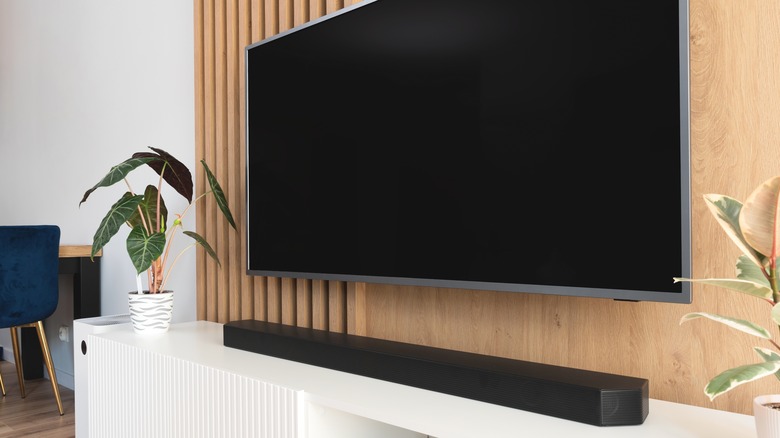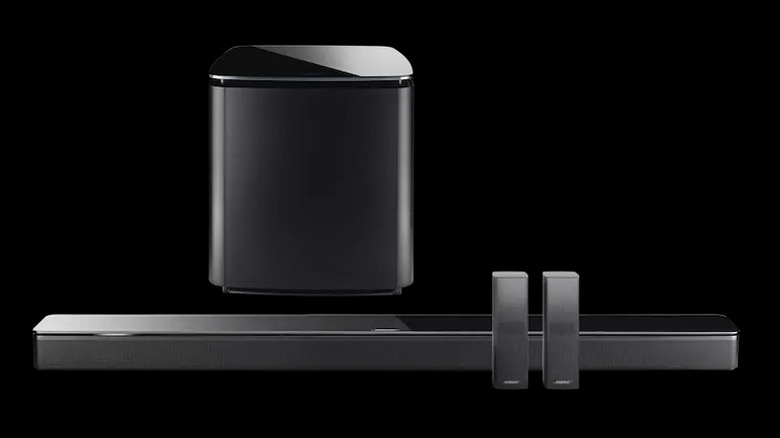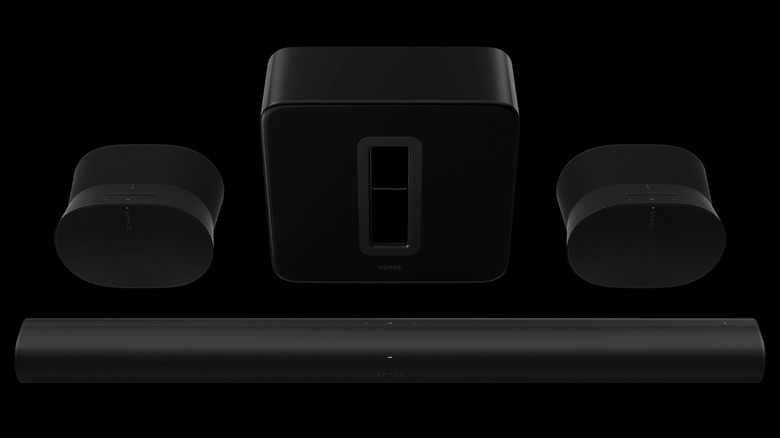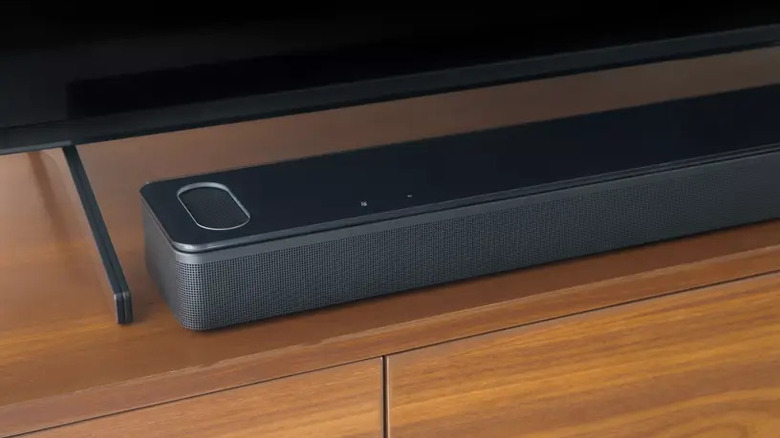What's The Difference Between Sonos & Bose Wireless Surround Sound Systems?
Wireless surround sound systems are an enormously appealing prospect for those of us wanting to set up a designated home theater, or even just give our living room more oomph so that the aural matches the visual of a high quality television. Although wired surround sound speaker systems still afford the best audio quality out there, wireless systems give you the freedom to place your speakers anywhere in the room you see fit. Without burdensome lengths of wires, you don't need to do any major installation work hiding wires within your walls.
Two of the biggest names in the wireless speaker arena right now are Bose and Sonos. Both companies offer a wide variety of speaker options, from soundbars to subwoofers to portable speakers, and amongst those options are several different varieties of full wireless surround sound. Depending on your budget and need, both Bose and Sonos have a lot to offer if you want to experience the movies and television you watch in their optimal conditions. We will examine both companies' surround sound systems, how you can connect, and their audio quality, features, and price to help you determine which system is right for you.
Connectivity
When you have a collection of wireless speakers for surround sound, you need to figure out how these speakers are going to connect to each other, and that is going to happen in one of two ways. Either these speakers will all be linked by Bluetooth, or all the speakers will connect through your home's Wi-Fi. Generally, connecting your speakers through Wi-Fi is the more stable option, as signals can get disturbed in Bluetooth speakers. Still, depending on your home's Wi-Fi capability, you may not want to have a ton of devices connected to it at all times.
When it comes to Sonos surround sound systems, such as its Premium Immersive Set with Arc, they can only connect through Wi-Fi. Meanwhile, Bose systems like its Seismic Sound Ultimate Home Theater System, gives you the optionality of Wi-Fi or Bluetooth. If you decide to use Bluetooth, an added advantage is that you can also connect Bose wireless headphones to your system, which is ideal if you want to use your home theater at a bad time to have blasting surround sound, like late at night.
The two companies' soundbars also allow you to play audio from a nearby Bluetooth device, as well as connect with Apple AirPlay. However, some features that Bose has that Sonos doesn't have are the ability to play music through Spotify Connect and the ability to set up a virtual assistant like Alexa or Google Assistant.
Number of speakers
Bose and Sonos both sell individual speakers and bundles for recommended home viewing. The highest quality set for Sonos is its Premium Immersive Set with Arc. This five-speaker system features the Arc — its best soundbar — two Era 100 Smart Speakers, and its Gen 3 Subwoofer. Altogether, at the time of writing, the recommended retail price will run you $2,196, with a current Sonos offer reducing that to $1,976. Meanwhile, Bose's best bundle is also a five-speaker setup featuring its Smart Soundbar, two Bose Surround Speakers 700, and one Bose Base Module 700. Bose's system is priced a tad bit higher than Sonos, at $2,347, but that's currently discounted to $2,097.
In terms of the audio quality of Sonos' Arc and Bose's Smart Ultra Soundbar, these are not just your average speakers, as both soundbars support Dolby Atmos — the three-dimensional surround sound technology — making it seem that you have far more speakers than you actually have. Of course, what you are playing will need to be broadcastable in Dolby Atmos, and if it is, the soundbar will act as the center, left, and right channels in a typical 5.1 surround sound setup. The two supplementary speakers complete that five, usually placed in the rear of a room, with the addition of your subwoofer. Neither Sonos nor Bose have a configuration for a 7.1.2 sound system (seven speakers, a subwoofer, and Dolby Atmos), but for most home theaters that aren't the size of a full cinema, a 5.1.2 system should be plenty.
Understanding your room
It's tricky to find a preference between the surround sound systems offered by these two separate brands. However, one major difference between the Bose and Sonos home theater systems is how each system can adjust its settings based on the room in which you are using it.
If you purchase a Bose surround sound system with a soundbar, you are given an ADAPTiQ headset. Wearing this and connecting it to the soundbar, you are instructed to sit in different locations within the room so that the speaker can adjust its levels to best suit the size of the room and the distance from the soundbar. Once you've completed the process, you can put away the ADAPTiQ headset.
For Sonos, the big drawback for many people is that to utilize the soundbar's Trueplay feature, you need an iPhone. The Sonos app on Android is not equipped for this. Once you have loaded up the app and connected to your soundbar, you will be asked to walk around your room, lifting your phone up and down so the soundbar gets a sense of the space. While effective, you lose out on this feature if you don't have an iPhone, and Bose's ADAPTiQ headset isn't dependent on devices you already have.



